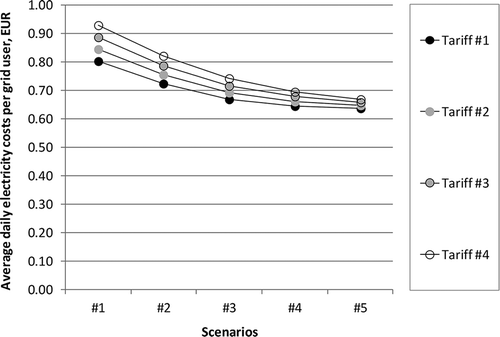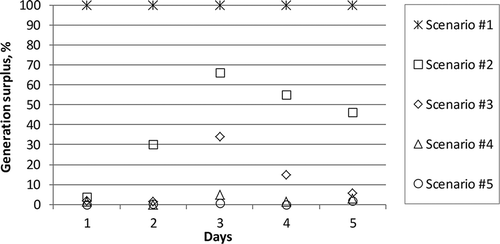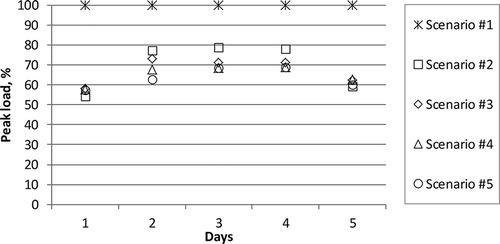Figures & data
Figure 2. The structure of the proposed energy management: Input/output data and calculation algorithms.

Table 1. Decision table for load shifting request.
Table 2. Scenarios for flexible load capacities.
Figure 5. First day: Residual load, residual load after performed load shifting by the first grid user (Scenario #4), electricity price, load shifting request for the first grid user (Scenario #4).

Table 3. Electricity pricing tariffs for grid users.
Figure 10. Average daily electricity costs per grid user at different electricity pricing tariffs: Scenarios #1 to #5.

Table B.1. Answer options for questions 1–6.
Figure B.1. Results on questions 1 and 2: Experts’ view on the importance and on the priority of DR system [1 = Not at all important; 5 = Extremely important] [1 = Not priority; 5 = Essential].
![Figure B.1. Results on questions 1 and 2: Experts’ view on the importance and on the priority of DR system [1 = Not at all important; 5 = Extremely important] [1 = Not priority; 5 = Essential].](/cms/asset/a3bbbc3c-1632-4a55-b61f-3230374ca3bb/ljge_a_1355309_f0013_oc.jpg)










![Figure B.2. Results on questions 3-5: Experts’ view on the importance of the following DR functions (i) for local electricity grid, (ii) for local generators and (iii) for electricity system support [1 = Not at all important; 5 = Extremely important].](/cms/asset/1a56b49d-2eda-4e64-95b6-be74de85f8ac/ljge_a_1355309_f0014_oc.jpg)
![Figure B.3. Results on question 6: Experts’ view on the importance of the advanced technical features for different DR systems [1 = Least important; 5 = Most important; 0 as Not applicable].](/cms/asset/46b9d484-0860-44c2-b2f4-bf8a523e2cac/ljge_a_1355309_f0015_oc.jpg)